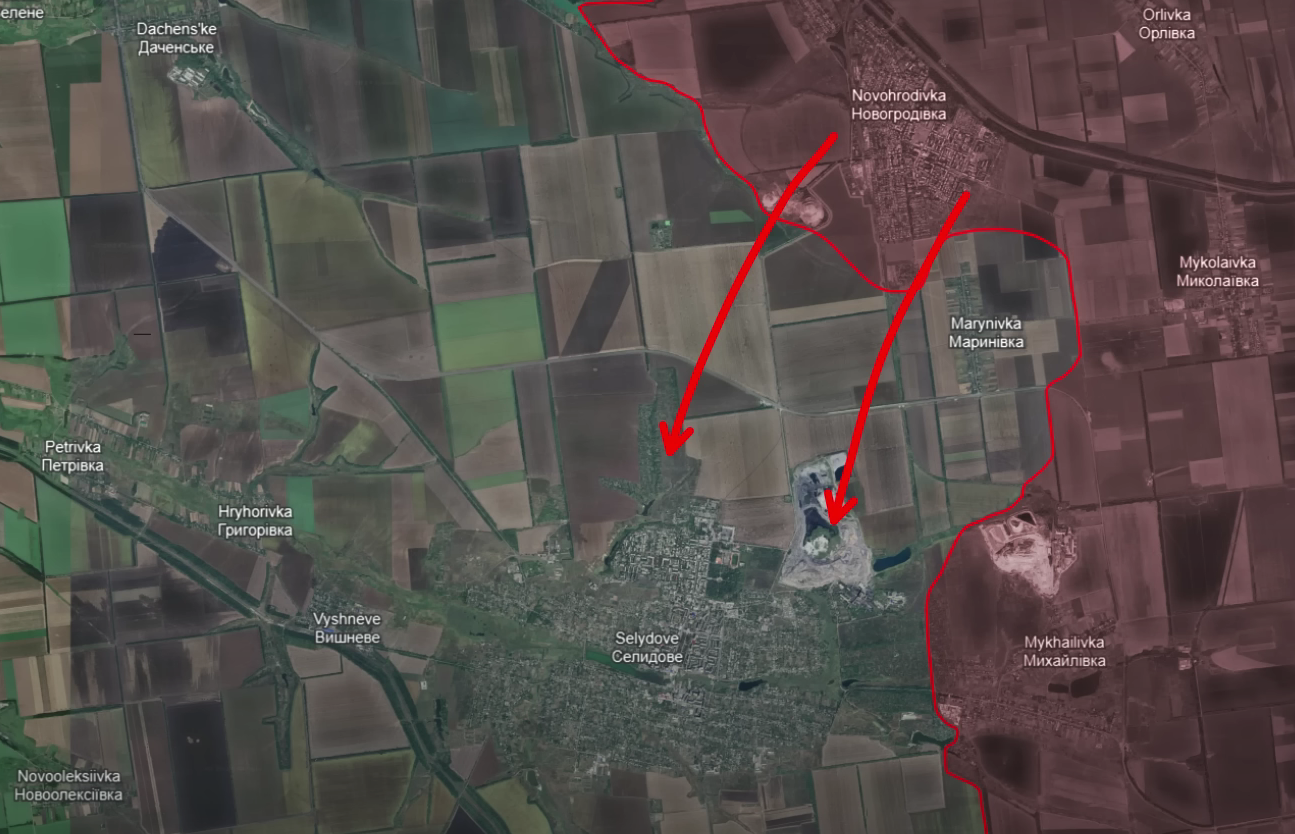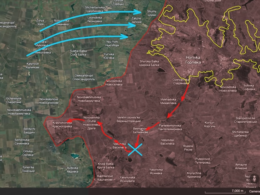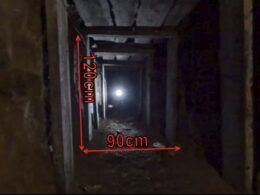Day 952
On 2 October, the most interesting developments come from the Pokrovsk direction. Here, the looming rainy season threatens to turn the Ukrainian fields into impassable mud, forcing Russians to launch hurried assaults before their time runs out.
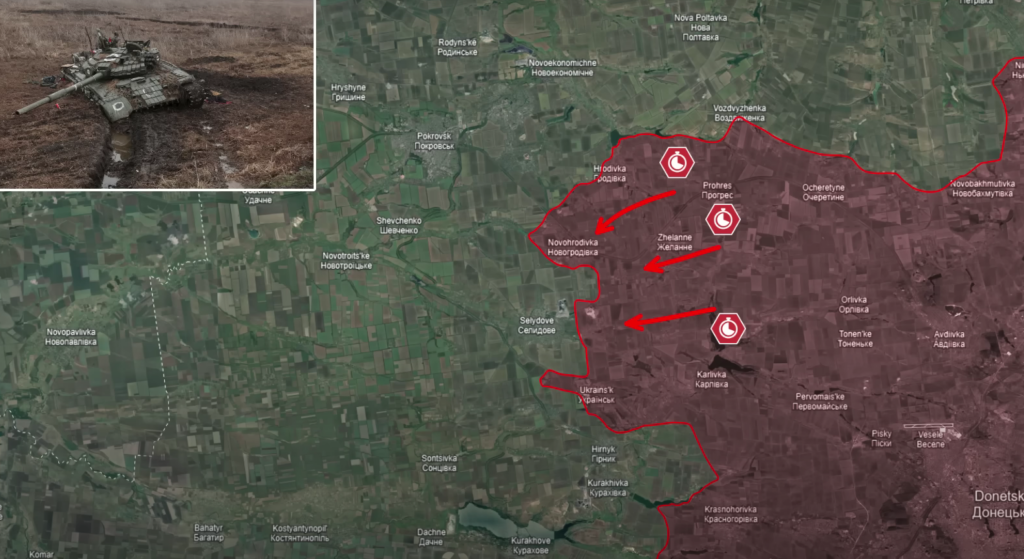
Ukrainians exploited these hurried assaults to deal heavy losses to Russian forces, and buy themselves enough time to fortify their main stronghold.
The main goal of Russians in this direction continues to be reaching and capturing the strategically important city of Pokrovsk, as it functions as a crucial logistics hub for Ukrainian forces in Donetsk.
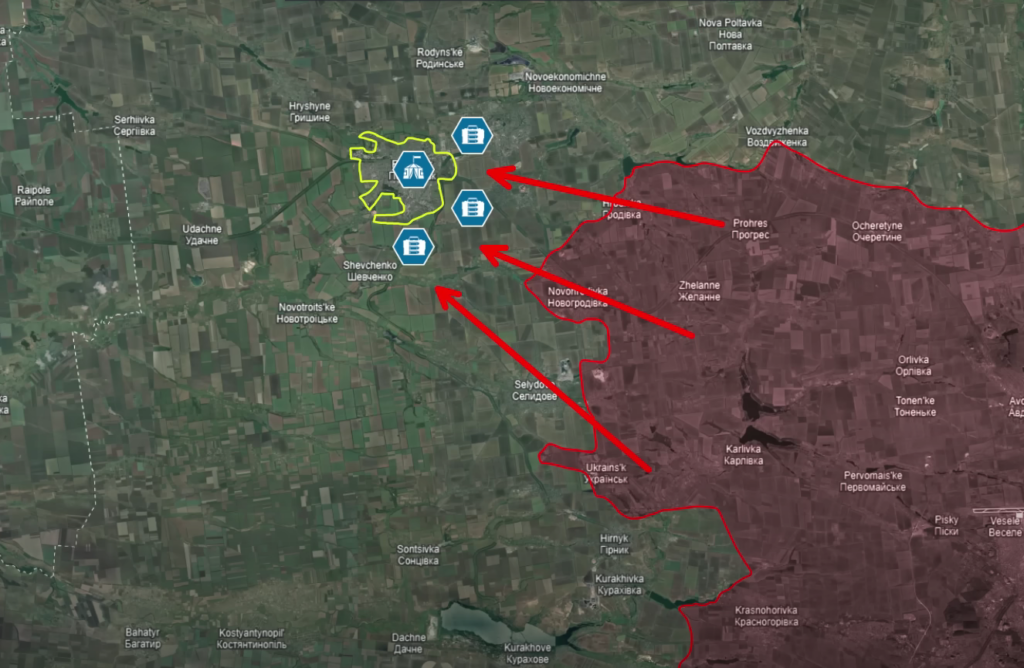
But before the Russians can start the storming operation, they must overcome the last town of the Selydove-Novohrodivka-Hrodivka defense line to protect their flanks from Ukrainian counterattacks.
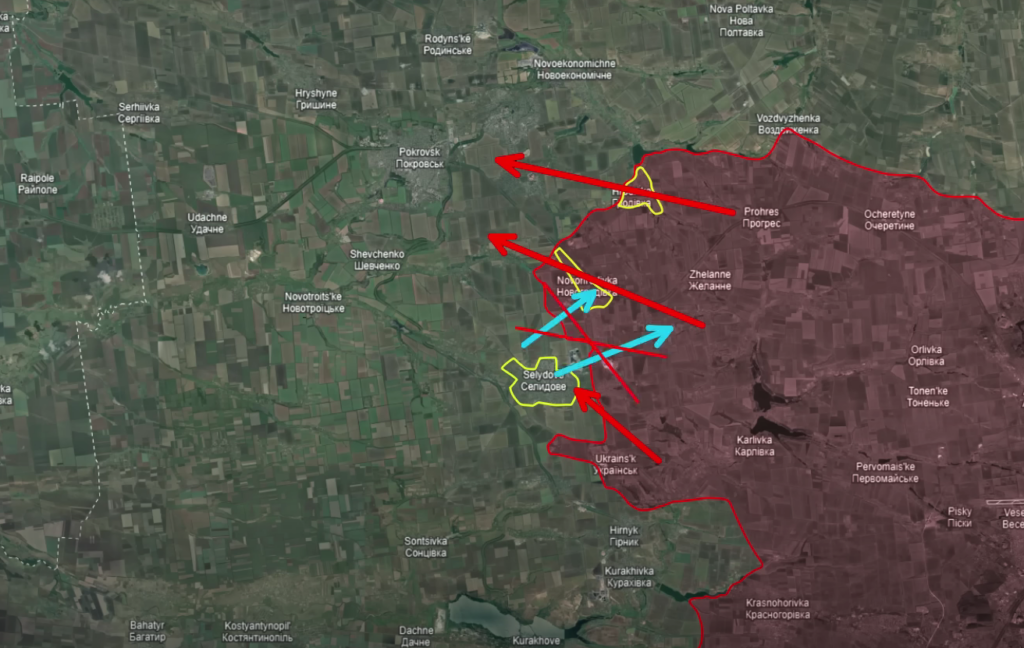
The initial Russian plan was to take Selydove in a rapid frontal assault, but the Russian storming operation quickly collapsed under the pressure of constant Ukrainian counterattacks.
As Ukrainians had also moved additional reinforcements toward the Selydove area, Russians could not breach Selydove in an outright assault and had to change their tactics.
The new Russian tactics involved assaulting Selydove from the north and opening a new vector of assault from Novohrodivka.
Ukrainians counterattacked the Russian flanking maneuver by conducting lone tank raids. These raids drove up to Russian assault groups moving through the tree lines and engaged them with high-explosive shells.
Moreover, while Russians initially claimed control of the village of Marynivka, geolocated footage soon proved otherwise, indicating that Ukrainian positions in the settlement were holding strong against Russian attacks, undermining the entire Russian flanking operation at its base.
By the end of October, the autumn rainy season will turn every field in eastern Ukraine into mud, making rapid mechanized maneuvers practically impossible. This means that Russians are running out of time to reach and capture Selydove and continue moving toward Pokrovsk.
It becomes clear why Russians continued to launch repeated assaults on Marynivka to complete their flanking operation from the north as soon as possible.
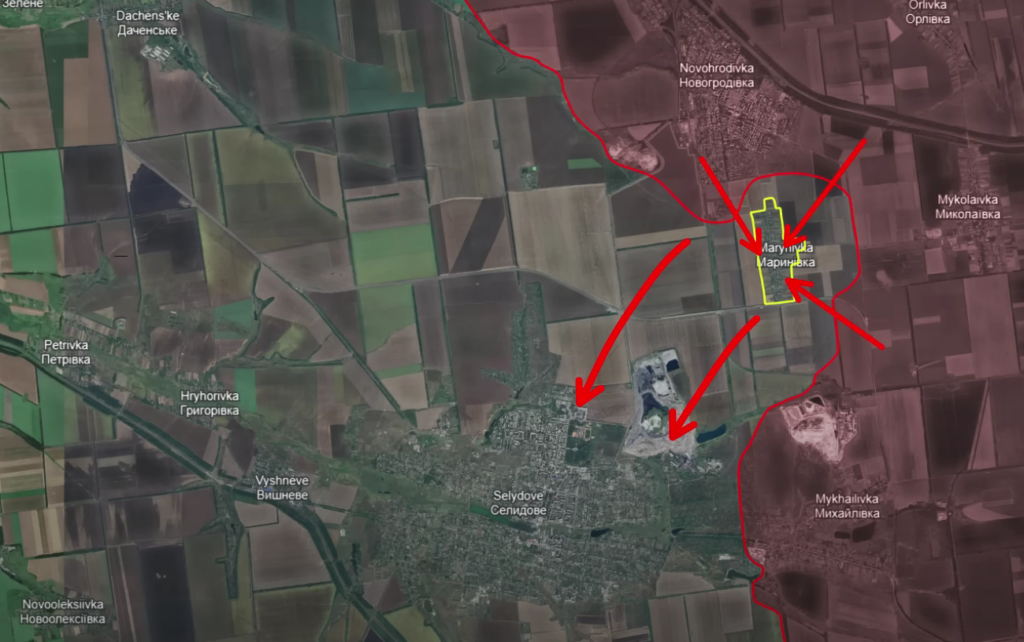
Ukrainian soldiers operating in Marynivka reported that Russians were launching simultaneous attacks from all three sides, which made them hard to repulse as Ukrainians could not concentrate their fire.
Russians took heavy casualties, as they hurried large groups of infantry over the open roads toward the settlement. Ukrainians even shared geolocated footage of nearly 50 dead Russian bodies on one road that Russians were using not for assaults, but only to gather their forces in preparation for an assault, showing how the intensity of meat wave tactics.
The meat waves allowed Russians to encroach on Ukrainians from all sides, and Ukrainians decided to withdraw their forces from the salient. Nonetheless, Ukrainian forces managed to deal heavy casualties to the Russians and delayed the Russian flanking operation for nearly two weeks. This gave the defenders of Selydove precious time to fortify the town and organize defensive positions against the new threat.
Knowing that they only had a few more weeks before the mud season began, Russian commanders ordered direct and repeated assaults on the northern flank of Selydove. The limiting factor for advancement was that Russians could only advance in the areas from which the Ukrainians had withdrawn, so the moment Russians came closer to the towns’ edge, they were stopped by fierce resistance.
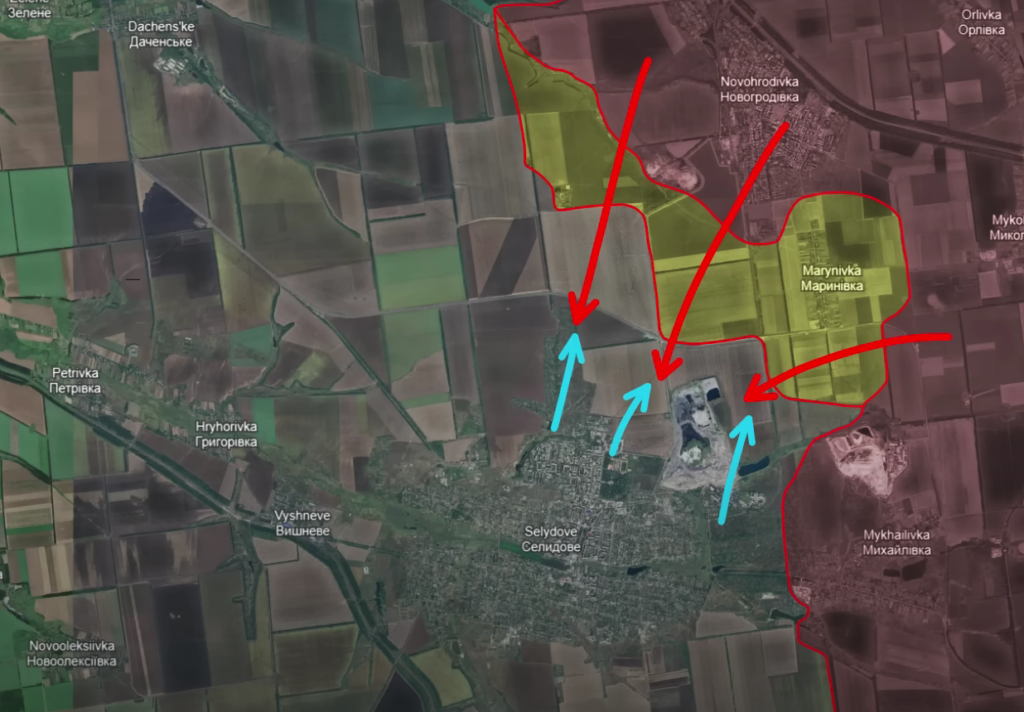
One of the most important strongholds shielding Selydove is the terrikon to the north. This terrikon is the largest in the surrounding area, with a surface area of over 1 point 1 square kilometer and standing over 50 meters over the surrounding area. Ukrainians used the elevated positions on top of the terrikon to exert large drone fire control over the northern approaches to the town, targeting the Russian assaults.
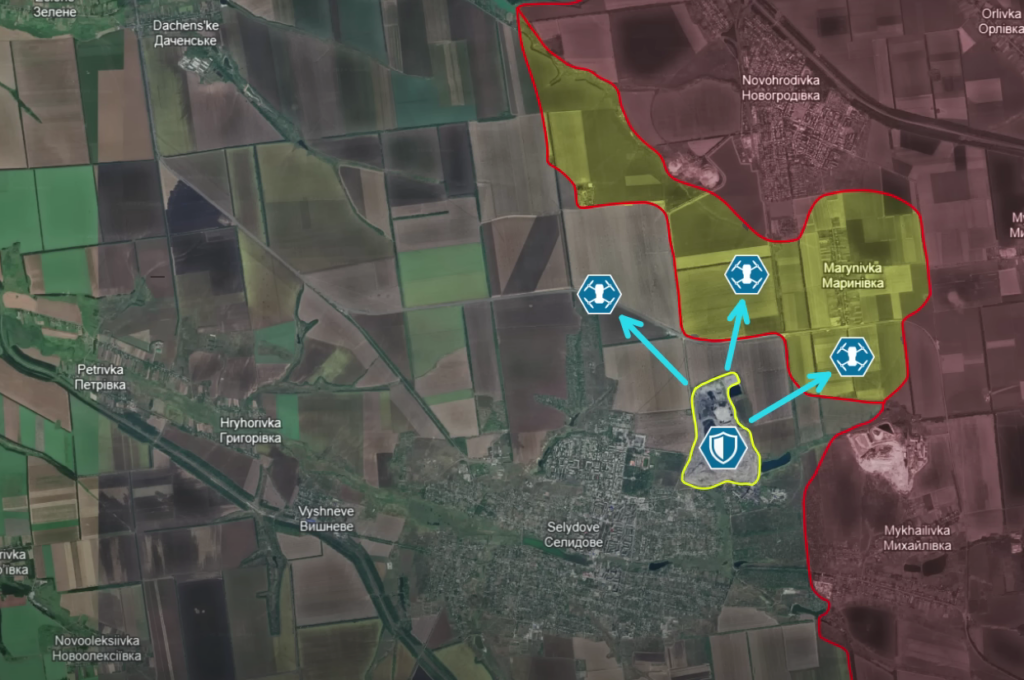
Geolocated footage illustrates the frequency of these assaults, as we see one Russian armored personnel carrier retreating after a failed assault, as two others already drive in for the next attack.
The footage also shows that in their hurry, two of the Russian armored vehicles crash into each other in a head-on collision, stunning both vehicles. Ukrainian drone operators then continue to show how they destroyed all three of the Russian BTR-82A armored personnel carriers, which are a relatively rare find as hundreds of these have already been destroyed in the past.
Even though Russians are now closing in around Selydove, Ukrainians have had weeks to prepare defensive positions, and maintain firm control over all the important defensive structures in the town.
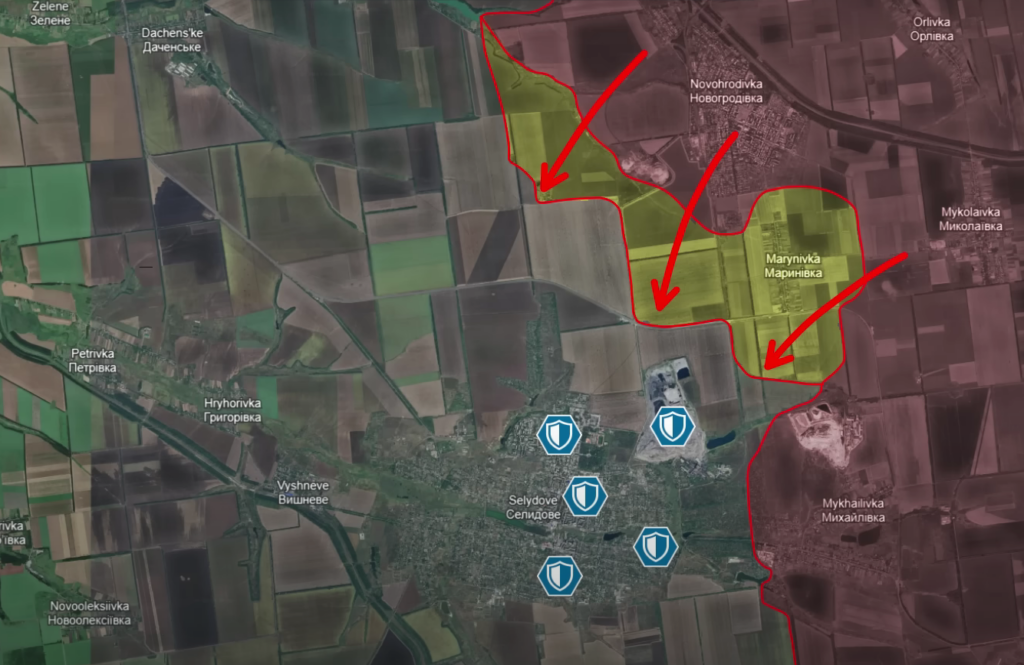
Russians also have limited time to achieve their operational goals of taking Selydove and advancing to Pokrovsk, as the seasonal rain will deteriorate their ability to conduct rapid mechanized assaults. The hurried nature of the Russian assaults has already led to many blunders and high losses for the Russian assault groups, who do not have the time to carefully plan out their approach.
The mud season will also severely undermine Russian logistics, as they only have a couple of hardened roads to supply their entire salient. Meanwhile, Ukrainians maintain a solid logistical network leading into Selydove, giving them a significant operational advantage and allowing them to put up strong resistance.
In our daily frontline report, we pair up with the military blogger Reporting from Ukraine to keep you informed about what is happening on the battlefield in the Russo-Ukrainian war.
Read also:
- The Telegraph: Russia secures control of key Ukrainian stronghold in eastern Donbas, securing biggest victory since February
- Zelenskyy confirms successful flight tests of domestically produced ballistic missile
- Air defense shoots down 11 drones in three oblasts at night

